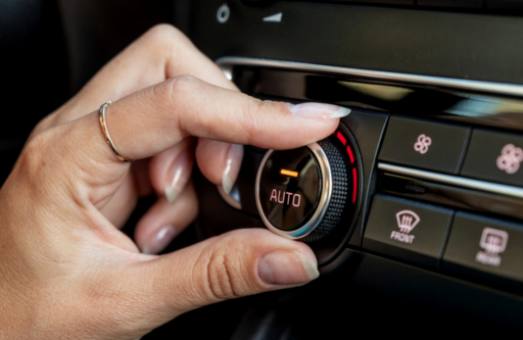As a car owner, it's easy to overlook the minor details of maintenance, such as the windscreen washer fluid reservoir. However, neglecting this component can lead to a range of issues that can affect your overall driving experience. In this article, we will explore the importance of the windscreen washer fluid system, the signs of a faulty reservoir, how the washer fluid system works, the consequences of ignoring maintenance, troubleshooting common problems, and essential maintenance tips to keep your windscreen washer in top condition. Understanding these key points will help you avoid costly repairs and ensure clear visibility while on the road.

Understanding the Importance of Windscreen Washer Fluid
Windscreen washer fluid is an essential component of a vehicle's maintenance routine. It plays a crucial role in ensuring the visibility and safety of the driver and passengers. The washer fluid, also known as windshield wiper fluid, is used to clean the windscreen, removing dirt, dust, and other debris that may obstruct the driver's view. It is especially important in adverse weather conditions such as rain, snow, or sleet, where good visibility is vital for safe driving. Additionally, the washer fluid also helps to remove bugs, bird droppings, and other sticky substances that may accumulate on the windscreen during travel. Overall, the windscreen washer fluid is a fundamental aspect of maintaining clear visibility while driving, enhancing safety on the road.
Signs and Symptoms of a Faulty Washer Fluid Reservoir
The signs and symptoms of a faulty washer fluid reservoir are important to be aware of in order to address the issue before it becomes a bigger problem. Some common signs of a faulty washer fluid reservoir include insufficient or no fluid coming out when the washer button is pressed, visible cracks or damage to the reservoir, and leaking washer fluid underneath the vehicle. Additionally, a low washer fluid indicator light may come on even when the reservoir is full, indicating a potential issue with the reservoir or the fluid delivery system. It is important to address these symptoms promptly to ensure the proper functioning of the washer fluid system and avoid potential safety hazards on the road.
How Washer Fluid System Works and Potential Issues
The washer fluid system in a vehicle is a simple yet crucial component for maintaining clear visibility while driving. When the driver activates the washer fluid system, the washer pump draws the fluid from the reservoir and sprays it onto the windshield through nozzles, clearing away dirt, bugs, and other debris.
Potential issues with the washer fluid system can include a faulty washer pump, clogged nozzles, or a crack or leak in the reservoir. Any of these problems can result in reduced or insufficient washer fluid delivery, leading to compromised visibility while driving. It is important to regularly inspect the washer fluid reservoir and its components for any signs of damage or malfunction in order to ensure the system operates effectively when needed. Regular maintenance and prompt repairs can help prevent more serious issues from developing and keep the washer fluid system in proper working condition.
Consequences of Neglecting Windscreen Washer Maintenance
Neglecting windscreen washer maintenance can lead to a number of consequences that can affect the safety and performance of your vehicle. A faulty washer fluid reservoir can result in decreased visibility, as the windshield may not be properly cleaned when driving in dirty or inclement conditions. This can lead to a higher risk of accidents and collisions, as the driver's ability to see the road ahead is compromised. Additionally, neglecting washer fluid maintenance can lead to damage to the washer pump and nozzles, resulting in costly repairs or replacements. Overall, failing to maintain the windscreen washer system can compromise the safety and function of your vehicle, making it essential to address any issues with the reservoir in a timely manner.
Troubleshooting Common Problems with Windscreen Washers
When it comes to troubleshooting common problems with windscreen washers, there are several issues that car owners may encounter. One common problem is a clogged nozzle, which can prevent the washer fluid from spraying onto the windshield. This can often be resolved by using a pin or needle to clear the nozzle. Another common issue is a leak in the washer fluid reservoir, which can result in the fluid not reaching the windshield. A visual inspection of the reservoir can help identify any cracks or damage that may be causing the leak. Additionally, a weak or inconsistent spray of washer fluid can be a sign of a faulty pump. This can be diagnosed by checking the pump for power and listening for any unusual noise when the washer switch is activated. Finally, a frozen washer fluid reservoir or pump can occur in cold weather, preventing the fluid from spraying onto the windshield. This can be remedied by using a winter-specific washer fluid or by parking the car in a warmer location to thaw the system.
Maintenance Tips and Professional Advice on Windscreen Washer Care
Regularly check the fluid level and ensure it is topped up to avoid running out at inconvenient times.
Use a high-quality washer fluid to ensure it effectively cleans the windshield and prevents smudges.
Regularly inspect the washer nozzles to ensure they are not clogged or blocked, and clean them if necessary.
Check for any leaks in the washer fluid reservoir or hoses and address them promptly to prevent loss of fluid.
During cold weather, consider using a winter-grade washer fluid to prevent it from freezing and damaging the system.
If you notice any unusual noises or issues with the washer system, seek professional advice to diagnose and address the problem before it worsens.
